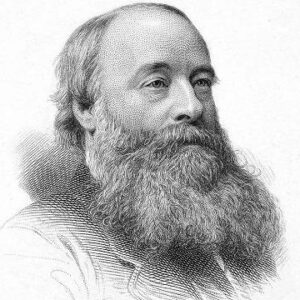Prescott, James Joule was an English scientist who is most known for discovering the link between mechanical work and heat transport. The ‘Law of Conservation of Energy,’ which states that ‘Energy can neither be created nor destroyed; it can only be moved from one form to another,’ was discovered as a result of this research. From an early age, he was a creative and self-assured child who was captivated by heat and electricity. He self-taught most of his understanding of electricity and magnetism, and as a result, he made a name for himself in scientific history. After years of investigation, he devised an experiment that resulted in the discovery of the first law of thermodynamics, which is today regarded as one of the most significant achievements in the field of heat transfer research. The significance of his contribution to physics and its different fields is highlighted by the S. I. unit for measuring energy, Joule, which is named after him. He co-invented the absolute temperature scale with Lord Kelvin and discovered the Joule-Thomson effect. He possessed a devout and spiritual demeanor despite being a scientist. He had an unwavering devotion to the beauty of nature and the principles that govern it.
Childhood and Adolescence
Benjamin Joule, a rich brewer, and Alice Prescott Joule, daughter of John Prescott of Wigan, had him on December 24, 1818 in Manchester, England. He was one of Benjamin and Alice’s five children.
He was a delicate and frail boy who was unable to attend regular school and had to rely on his aunt for his early education.
He was attracted by electricity and its effects as a child. He liked to conduct experiments at home, and one of his servants was accidentally shocked and knocked out during one of his tests.
His father’s health deteriorated, and at the age of 15, he and his older brother, Benjamin, were forced to work at a brewery. In addition, he was educated by John Dalton, a well-known English chemist.
Career of James Prescott Joule
He built an electro-magnetic engine when he was nineteen years old, in 1838.
For scientific and economic reasons, he worked in 1840 to replace the brewery’s steam engines with a newly constructed electric motor. He sought to improve his brewery’s machines in order to increase efficiency.
He devised an experiment in 1841 to determine the relationship between current, resistance, and heat in a conductor. Joule’s first law describes this relationship.
He reported on the paddle wheel experiment in 1845, which helped him understand the concept of energy conservation. He proposed that mechanical energy was turned into thermal energy during the experiment, which led to the development of the ‘Law of Conservation of Energy.’
During one of his presentations at the British Association in Oxford in 1847, he met William Thompson and collaborated with him on various studies on thermal effects. They discovered the Joule-Thomson effect as well as the absolute temperature scale.
Major Projects of James Prescott Joule
He looked into the nature of heat and established a link between it and mechanical action. This led to the formulation of the first law of thermodynamics, which was based on the idea of conservation of energy.
He established Joule’s first law, which describes the link between the quantity of heat released and the passage of electric current through a conductor. “The heat that is evolved by the correct action of any voltaic current is proportionate to the square of that current’s strength multiplied by the resistance to conduction that it encounters,” says the law.
The Joule-Thomson effect was discovered as a result of his collaboration with William Thompson. It refers to the temperature change that occurs when a gas or liquid is driven through a valve that is kept insulated so that no heat is lost to the outside.
He also collaborated with William Thomson, better known as ‘Lord Kelvin,’ on the absolute temperature scale.
Achievements & Awards
For his published paper ‘On the Mechanical Equivalent of Heat,’ he received the Royal Medal of the Royal Society in 1852.
He was elected President of the Manchester Literary and Philosophical Society in 1860.
From 1872 until 1887, he served as president of the British Association for the Advancement of Science.
For proving the relationship between heat, electricity, and mechanical activity, he received the Albert Medal of the Royal Society of Arts in 1880.
In his honor, a memorial was erected in the north choir of Westminster Abbey, and a statue was erected in Manchester Town Hall.
Personal History and Legacy
He married Amelia Grimes, the daughter of Mr. John Grimes, Liverpool’s Comptroller of Customs, in 1847. Benjamin Arthur and Alice Amelia were their two children.
His wife and son both died in 1854. Following this terrible tragedy, he spent the remainder of his life as a widower, working ceaselessly.
For his lifetime achievements and work, the British government awarded him a pension of two hundred pounds sterling. His unrivaled expertise in the subject of energy and its dimensions still serves as the foundation for many of today’s studies. Joule is the SI unit of energy and work named after him.
After a long illness, he died on October 11, 1889 in Sale, England.
Estimated Net Worth
James is one of the wealthiest conservationists and one of the most well-known conservationists. James Prescott Joule’s net worth is estimated to be $1.5 million, according to Wikipedia, Forbes, and Business Insider.


